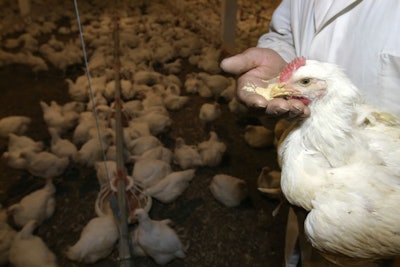
More education is needed on the use of phytase in broiler feed
Despite the fact that phytase has been around for more than 30 years, research and marketing continue apace. This was evidenced very clearly during the virtual International Production & Processing Expo (IPPE), where a whole session was devoted to phytase at the 2021 International Poultry Science Forum.
Clearly, education on how to use phytase in broiler feeds remains in demand as many products have flooded the market. Below is a brief list of points to consider when formulating feeds with phytase.
Correct dosage
Each product has a dosage guideline that is often expressed in various arbitrarily assigned units. It is best to know and formulate based on how many kilograms (pounds) are needed per metric ton (imperial ton) to make sure there is no error when switching from one product to the other.
Know bird requirements
A single dosage of most phytase products will release 0.08% to 0.15% available phosphorus. Before using any phytase, it is important to know the exact phosphorus requirements of the birds that will be fed with the feed being formulated. Adding phytase on top of already high margins of phosphorus specifications is not recommended.
Know ingredients
For the enzyme phytase to liberate bound phytin phosphorus, the ingredients in question must contain such phosphorus. Typical corn/wheat and soy/rapeseed diets contain about 0.3% total phytin phosphorus. So, adding phytase makes sense. Other ingredients contain less or no phytin phosphorus, making the work of phytase difficult to impossible.
Double dosage
A double dosage of phytase will not release double the available phosphorus. At best, you will release 50% of the original dosage. It is best to check with the supplier about the abilities of each product. Plus, for extra phytase to release extra phosphorus, the final feed must contain amble quantities of phytin phosphorus as explained above.
Available phytin phosphorus to break down
No system in this universe is 100% efficient, so do not expect 100% of phytin phosphorus to be released as phosphorus available to the animal, even with a super-dosage of any phytase. In most cases, the best return on investment is obtained during the first single dosage of phytase, at least with most commercial feeds.
Meal vs. pellet
Phytase is an enzyme, and enzymes are proteins. Proteins are sensitive to heat and, above 45 degrees Celsius, most start to lose their functionalities. So, heat-resistant phytase products are required when feeds are to be pelleted. These are more expensive, as is to be expected. So, when feeds are not pelleted, heat resistance should not be a required trait for the phytase to be used.
Energy, protein, amino acids
All phytase suppliers provide nutrient matrices for their products that support the notion of higher energy and amino acid availability by the use of their products. Most, but not all, nutritionists abide by this notion. In commercial nutritional supplements, such claims often are used for marketing purposes.
Interactions
Phytase works best under certain conditions as it interacts with other nutrients. For example, phytase interacts negatively with bentonite, an ingredient used often to control aflatoxins. It is best to check with your supplier of phytase about possible interactions with minerals and other additives in your feeds.
Cost vs. other considerations
From an environmental point of view, most would argue that it pays to use phytase in animal feed. When it comes to economics, however, it is only the scarcity of phosphate salts during the past 20 years that has given such tremendous boost to phytase as an additive. Giving a matrix phosphorus specification to phytase as an ingredient will help the feed formulation program decide if it is less expensive to use phytase or phosphate salts.
Supra-nutritional effects
Some phytase suppliers have invested heavily on claims that go beyond nutritional effects. This notion has not been accepted, yet, by most nutritionists. Under this assumption, phytase is believed to act as an add-on additive and not merely as a phosphorus release agent. Dosages are 10 to 15 times higher than for phosphorus release, and the high cost associated with this proposal is unlikely to convince many to follow such logic.
Phytase remains an effective additive that is being used by most broiler nutritionists. The fact that research continues signifies the fact that new products continue to emerge, whereas older ones continue to evolve. That marketing of phytase remains so strong means that not all nutritionists are using phytase and its usage remains a matter of phosphate salt availability and pricing. It is indicative that research concerning the beneficial effects of phytase on the environment has subsided considerably recent years.














